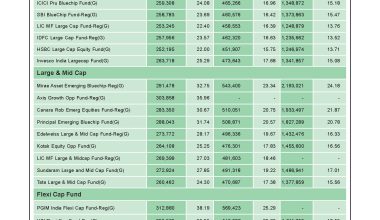By Anu V.Pai and Vinod T.P., Commodity Research Analyst
In the backdrop of commodity supercycle chatters, the year 2021 turned out to be a promising one for the commodities market. Bloomberg Commodity Index jumped to seven-year highs, gaining 25 percent. A good number of commodities either rallied to new highs or hit multi[1]year highs. Covid-19 pandemic, related developments and aftermaths continued to be the predominant factor that influenced commodities. Agriculture commodities too emerged as a highly upbeat one. The FAO Food Price Index (FFPI), which is a measure of the monthly change in international prices of a basket of food commodities, reached a 10-year high in 2021. Globally, a resurgence in demand, stockpiling, supply bottlenecks, weather, labor shortages etc. bolstered agri-commodity prices. The trend resonated in the Indian market as well. NCDEX Agridex jumped a whopping 49 percent in 2021.
Guar complex gained the most among the exchange traded commodities. Guar gum futures on NCDEX had hit a decade low in 2020 when the pandemic struck and a bounce off was witnessed there off. Yet, the movement in the commodity was largely in a range until June 2021. Similar moves were witnessed in Guar seed futures as well. The uptrend in the guar complex began in July 2021. Subsequently, in October, guar gum futures hit a seven[1]year high. Guar seed futures too climbed to multi-year highs. With delayed sowing, uneven rainfall, good demand from the poultry sector, pickup in export demand and in crude oil prices triggered the uptrend in prices. However, a retreat from the multi-year highs was witnessed after new crop arrivals began but posted a yearly gain. Data from the agriculture department of Rajasthan and Gujarat government showed a decline in 2021-22 kharif acreage of guar but the yield was higher. In Rajasthan, acreage stood at 21.13 lakh hectare (ha) as compared to 24.84 lakh ha last year with yield pegged higher at 650 kg/ha vs 458 kg/ ha last year, while in Gujarat, it was seen at 1.21 lakh ha Vs 1.22 lakh ha and yield pegged higher at 873 kg/ha Vs 699 Kg/ ha last year. According to the second advanced estimate from the Rajasthan government, guar seed production is seen to be a tad down at 1.1 million tons in 2021-22.
The year 2021 was the most happening period for oil and oilseed faction. All the commodities in the oilseed complex rose in the last one year amid contingent risk caused by the spreading of a new variant of the COVID-19 virus. Among these, soybean and mustard seed rose the most, hitting fresh record highs. Soybean prices on the NCDEX platform rose by more than thirty five percent on year. Sharp rise in demand for soymeal in the initial half along with lower leftover stocks led to the rally. On the international front, a fall in production from Brazil and Argentina due to drought amid lower carryover stocks kept the prices on the firm note. Later, the second half witnessed high volatility. Soybean prices eased on fall in demand due to lockdown restrictions across India and the expectation of a rise in domestic output. Moreover, a gradual decline in soymeal exports due to higher competitive prices compared to key exporting countries, cut in import duty of edible oils and government’s implementation of stock limits in oilseed preceded the correction. Major upside moves were also arrested by the emergence of a new variant of the COVID-19 virus, Omicron. But lower global carryover stocks and fall in output in Brazil supported the prices. Finally, it posted gains for the year. However, the sentiments in the market were affected by the sudden halting of derivative trading in soybean and its biproducts by the SEBI in December 2021.
The uptrend was observed in mustard seed as well following a brief panic sell off witnessed in the first half owing to a rise in domestic mustard seed output, concerns over the spread of coronavirus and the subsequent closure of spot markets. However, prices recovered thereafter as the government relaxed lockdown restrictions, prohibited the blending of mustard oil with other oils and steady decline in arrivals in the spot market. It rallied to a record high in August 2021 tracking gains in soybean and on tight domestic supply. On the international front, severe drought in Canada, the largest producer of canola supported the gains in the Indian market too. However, prices started to see a declining trend after the exchange banned futures trading in mustard seed in October. Moreover, the expectation of a rise in mustard output during this rabi season weighed the sentiments as well.
In the entire edible oil segment, crude palm oil rose the most. Crude palm oil prices moved higher in the initial months of the year on the back of higher domestic demand for cheaper oil along with strength in international prices. The rise in benchmark CPO prices in BMD Malaysia on lower output and stocks with strong export demand from China and India supported the gains in the Indian markets. However, in the latter half of the year, the government intervened in the edible oil market by cutting the import duties of palm oil several times and this eased the prices. On the international front, resurgence of the new variant Omicron weighed down the sentiments due to expectations of a fall in demand. However, it started to see some revival on the back of higher NYMEX crude oil gains and the recent floods in Malaysia, disturbing the output from the second largest producer. Meanwhile, the central ministry further intervened by restricting trade in palm oil futures for a year to cool off domestic prices. Refined soy oil prices too extended its gains owing to firmness in international markets on supply side disruptions and lower edible oil stocks. Though some corrections were witnessed after the imposition of lockdowns, improved festival demand and rise in crude oil prices lifted refined soy oil. However, a major rise was capped due to the government’s involvement to cool off the soaring edible oil prices by cutting the import duties on edible oil. Emergence of the new COVID-19 virus variant also softened the demand for the bean oil.
It was an upbeat year for the spices complex as well. Jeera and turmeric posted yearly gains for the first time in four years, while coriander futures resumed rising after posting losses in 2020. Spices complex on NCDEX kicked off the year 2021 on a relatively firmer note, but the outbreak of the second wave of Covid-19 infections put the break on the advances. Due to the resurgence of coronavirus infections, many major markets for physical trade in spices were either closed or functioning partially during the April-June period, which also coincides with peak arrival season in spices like turmeric, jeera and Major upside moves were also arrested by the emergence of a new variant of the COVID-19 virus, Omicron. But lower global carryover stocks and fall in output in Brazil supported the prices. However, the sentiments in the market were affected by the sudden halting of derivative trading in soybean and its biproducts by the SEBI in December 2021. 12 I Geojit Insights I February 2022 coriander. Jeera and coriander futures began its upward journey from August 2021. Scaling down of lockdown restriction, a “rollercoaster” southwest monsoon, forecast of lower acreage in the ongoing 2021-22 rabi season, mainly due to farmers shifting to other remunerative crops, and improved prospects of both domestic and export demand, led to a surge in jeera and coriander. Jeera futures on NCDEX hit a two-year high, while coriander futures hit its highest level in six years. According to the second advance estimate by Gujarat state agriculture department, jeera production is seen declining to 236980 tons in 2021-22, down 41 percent year on year. Area is seen at 289000 ha as against 473800 ha a year ago. Coriander production in the state declined to 211680 tons compared to 221240 tons in 2020-21.Turmeric futures, in the meantime, has been rather range bound following an initial rise to five-year highs in the first quarter of last year before rallying up again towards the close of 2021 to a six-year high. Prospects of rise in both export and domestic demand, concerns over lower output in 2021- 22 kharif season due of erratic rains affecting standing crop, outbreak of a disease in turmeric crop in Karnataka and lower carry-over stocks compared to last year fanned the uptrend in turmeric. Now, the arrival of new crops has started to trickle in the major spot markets and moving towards the peak arrival season.
Among the other commodities, cotton prices stayed positive throughout the year with mild alternating profit booking. Fall in global production with higher demand led to lowering global ending stocks coupled with heavy monsoon and pink worm infestation in key growing areas of Punjab and Haryana kept the prices on a firmer note. Moreover, firm domestic and export demand after easing lockdown restrictions pushed up the prices higher. While the bi-product, cottonseed oil cake spurred higher on back of firm demand from feed industry amid lower supply in the spot markets. Castor prices rose due to a decline in production along with improved demand for meal and oil in the domestic and international markets.
Kharif/Rabi sowing, output, monsoons, and the ‘Ban’
Agriculture production is also set to rise too. According to the first advance estimates released by the central government in September 2021-22 kharif output is expected to touch a record 150.5 million tonnes compared to 149.56 million tons harvested last year and 12.71 million tons higher than the five-year average. Oilseed production is estimated to be 23.39 million tonnes, 2.66 percent less than last year, but production of pulses is seen relatively better at 9.45 million tonnes, 8.74 percent more than last year.
Initially, there were concerns due to delay in the beginning of kharif sowing, which was due to a slight delay in the commencement of south-west monsoons. Also, the monsoon was erratic initially. However, the entire shortfall during these periods was offset by above normal precipitation in September and the normal monsoon for the third straight year. Though the southwest monsoon seasonal rainfall during June to September 2021 for the country altogether has been normal (96 -104% of LPA) according to the Indian Meteorological Department, considering month to month rainfall variation over India as a whole, the season is very uniquely placed in the historical record for its distinct and contrasting month to month variation. The rainfall across the country was 110%, 93%, 76% and 135% of LPA during June, July, August and September respectively.
According to the data from the farm ministry, kharif crops were sown across 112.2 million ha in 2021-22 (Jul-Jun) season, as against 112.0 million ha in the same period a year ago. Farmers have sowed rice, the largest-grown food grain during the kharif season, across 42.3 million ha, marginally higher than 41.0 million ha a year ago, according to the farm ministry’s data. Area under pulses was also marginally higher at around 14.2 million ha, while Oilseeds were sown across 19.6 million ha, compared with around 19.9 million ha a year ago.The total area under cotton is 12.0 million ha against 12.8 million ha a year ago, while that under sugarcane was at 5.5 million ha against 5.4 million ha.
Now, Rabi sowing is under progress and as on 15 January 2022, farmers in the country have sown rabi crops across 66.46 million ha, 1.2% higher year on year, according to data from the agriculture ministry. Agriculture exports are also set to soar in FY 2021-22. Despite various hindrances, agriculture and allied exports in the first eight months of FY 2021-22 rose 21 percent and are expected to reach $43 billion by March 2022.
In the meantime, repeal of the new farm laws and the Securities Exchange Board of India (SEBI) banning derivatives trading in some for a year were other marked events in the Indian agri-market in 2021. The SEBI initially suspended futures and options trading in chana in August 2021, mustard seeds in October and later in December it was extended to certain other commodities namely, paddy (non-basmati), wheat, chana, soya bean and its derivatives, crude palm oil and moong for a year. The move came on the behest of the government to contain inflationary pressure.
As another year unfolds, the lingering coronavirus pandemic crisis continues to create uncertainties in the market. Despite progress in vaccination, the rapid spread of new variants across the globe is again pushing for adoption of various restrictive measure, which could create disruptions in supply chains, labour movements, etc, affecting economic progress. Apart from this, the underlying fundamental factors like weather-especially impact of the LaNina phenomenon, government policies, export-import policy and demand, kharif/rabi harvest etc could influence the domestic agriculture commodity prices in coming days.






